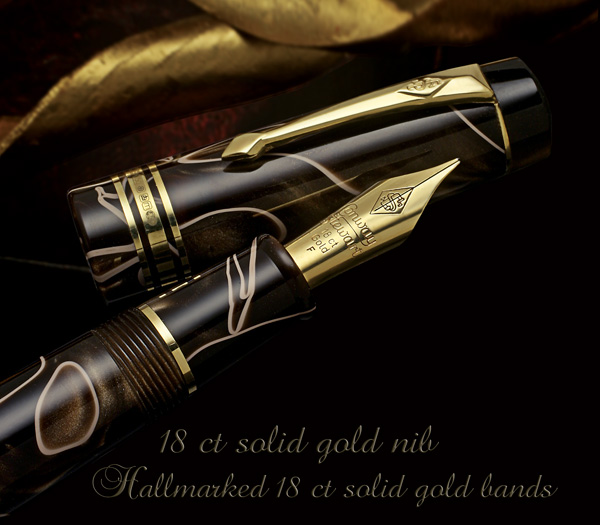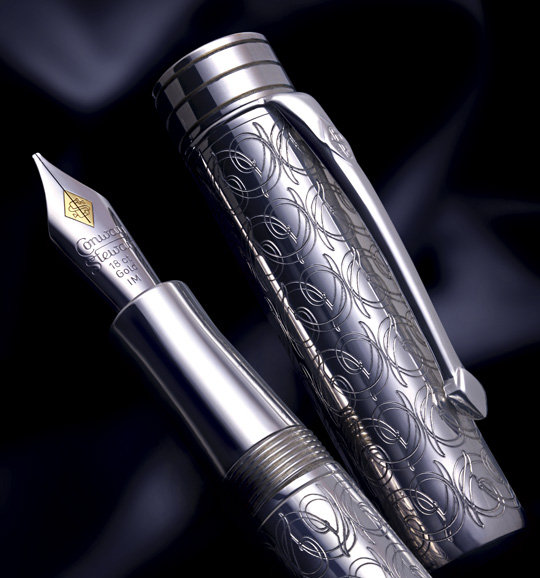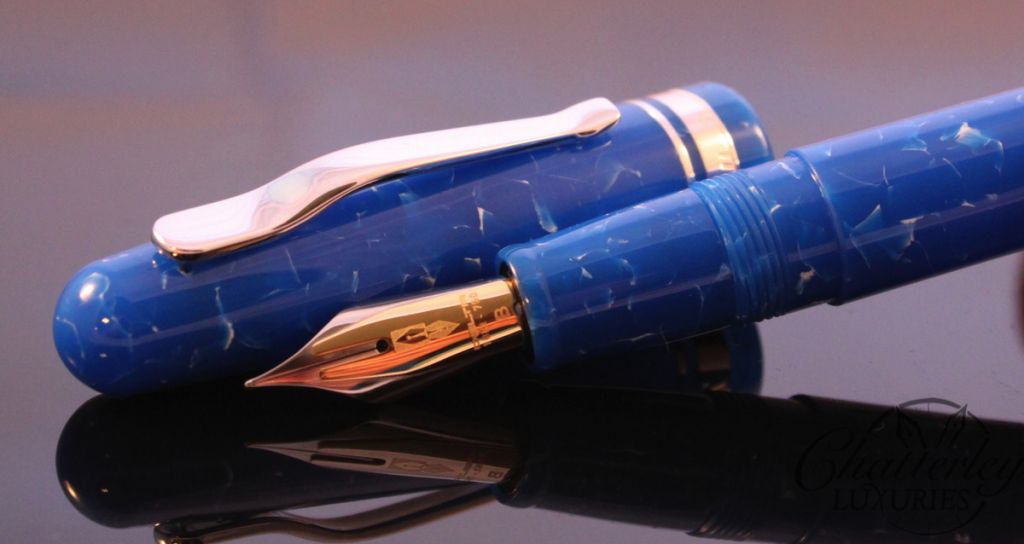Danitrio Urushi Ishimeji Black/Gold on Mikado with painted clip Fountain Pen
This pen is lovingly used and comes with box and papers. The pen is in perfect condition and fills via Eyedropper with shut off valve. The nib is a #8 Danitrio 18k Gold Stub.
Craftsmen call Urushi a living thing. Its qualities differ even from the same trees, but the quality is different from the trunk or branches. Different qualities from different trees or different areas or countries. Then, crude Urushi must be refined to make more than 10 different qualities of Urushi for different usage. Now craftsmen have to pay more than $600.00 per pound for genuine Japanese Urushi, $250.00 for Urushi imported from China. They use it on different occasions and different places, while manmade Urushi or plastic paint only cost a few dollars a pound. Genuine Urushi is like pure gold, only for fine jewelry. and pure gold is too expensive for cheap works with cheap materials.

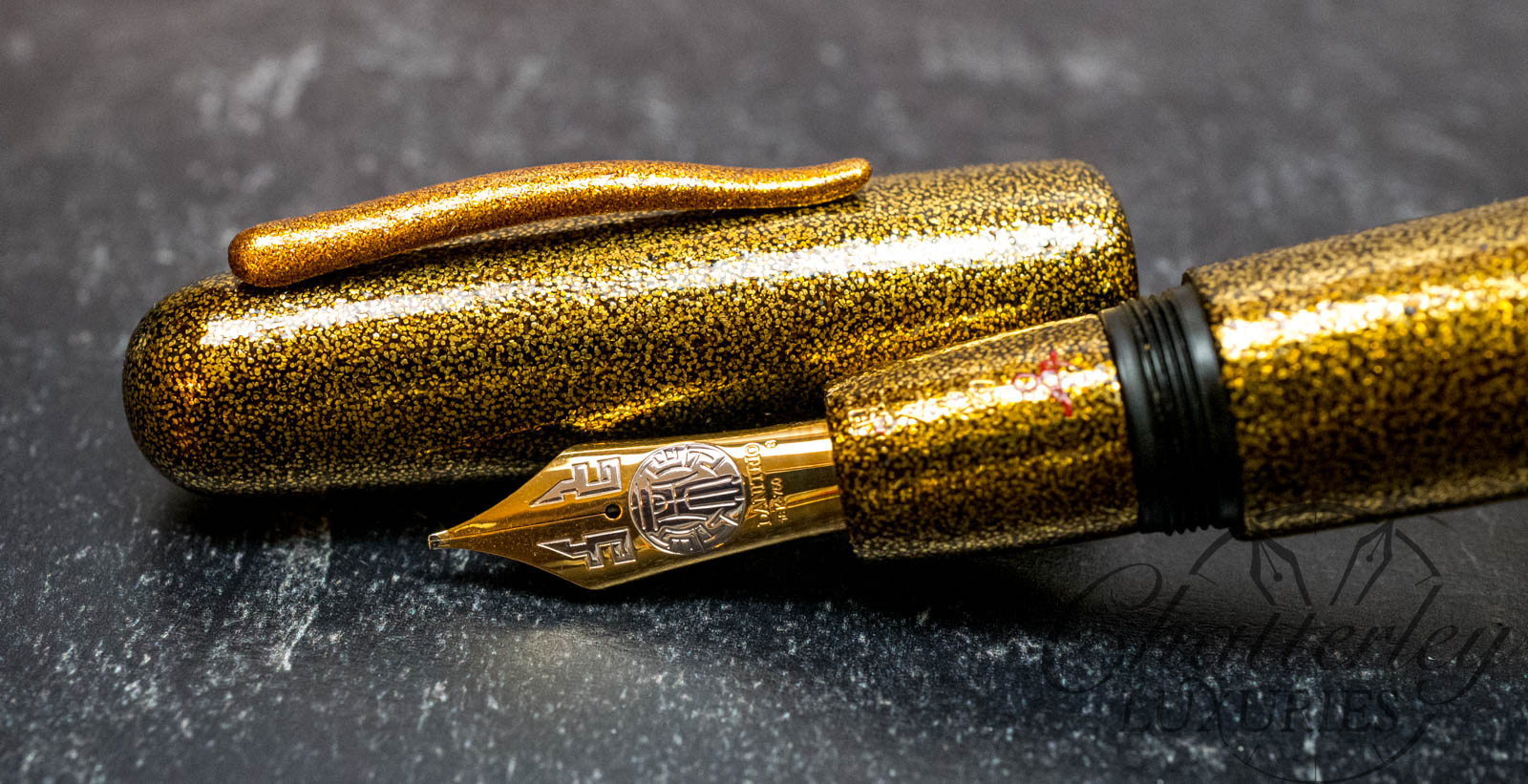
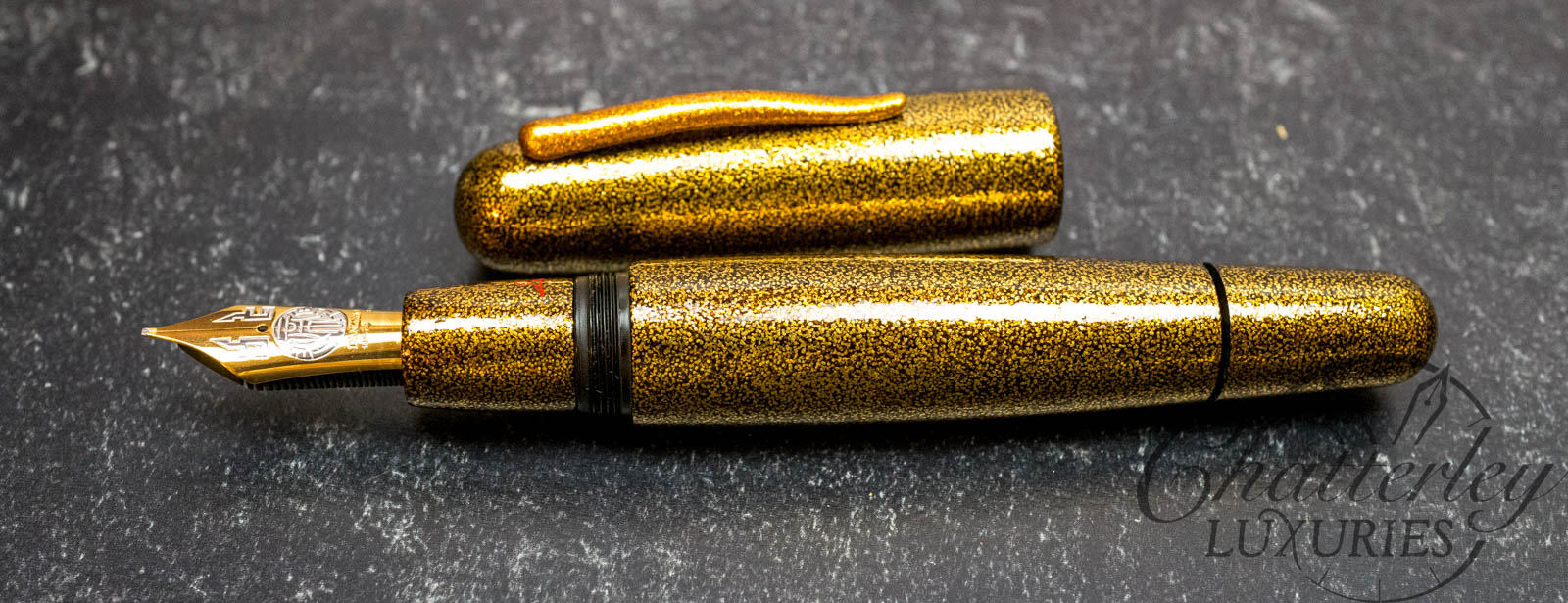
This pen size is Mikado, which is a larger pen and is fitted with an ebonite feed and a size #8 18kt gold nib. The nib grades available are Fine, Med or Broad. This pen fills via eye dropper. Here is a link to Danitrio to see how the eyedropper works for their pens.
The style of this pen is called Ishimeji, which means that the surface looks like rocks by paintings with different sizes of Urushi powders. Ishime Kinchi uses small size gold powders sprinkled thinly onto the surface and several minutes later the artist again sprinkles much more heavily with gold powder to make the surface rough. Or the artist may use smaller sizes of gold powders first to sprinkle over the surface, and then, use larger size to follow later to make the surface uneven like the surface of the stone called Ishimeji.
The base for Urushi paintings must be smooth and strong in order to have a good Urushi painting, which will last thousands of years. When the base is ready for painting, the first painting uses Sabi, Urushi mixed with polishing powders, as its base painting and call it Shita-nuri, the base painting. Then, Naka-nuri, the interim painting with Urushi is preparing for better Uwa-nuri, the finishing part of painting. The color of the interim painting has to be selected according to the color of the finishing part of painting. All these works are usually done by Nu-shi, craftsmen of Urushi paintings, painting 7 times in average and it takes 2-3 weeks before the Nu-shi can send back the pens to our Maki-e sh, who will do more Urushi painting works or Maki-e onto the pens.
Good basic paintings start with base painting, which the craftsmen paint twice or three times with Urushi mixed with finishing powders to make the base hard and durable. This is then followed up by the interim paintings which is done by one or two layers in preparation for finishing the painting. For Tame-nuri, the interim painting is done with the color for the Tame-nuri, if a red color is the goal, the red Urushi is used for interim.
The specialness of Urushi is that the Urushi has a layer of membrane and the color of the layer will be lighter and shinier, and the Tame-nuri will look lighter and shinier within several months to a year.
The translucent Urushi has to be made with Japanese Urushi, because Urushi from China or Vietnam are all black when they sap from the trees and they can never be refined to be Suke-Urushi to be used for the basic paintings.
MSRP $2500

